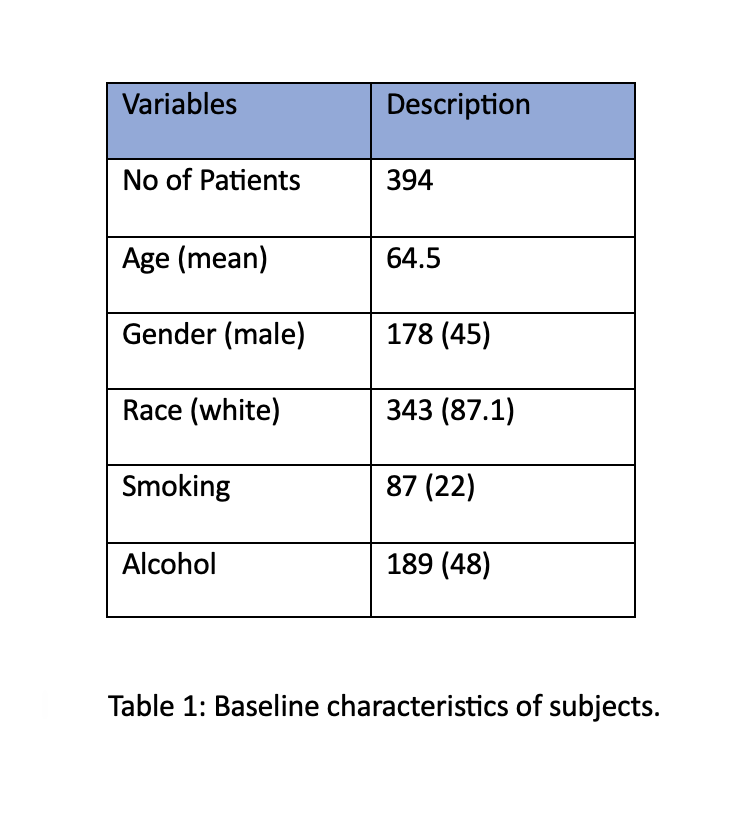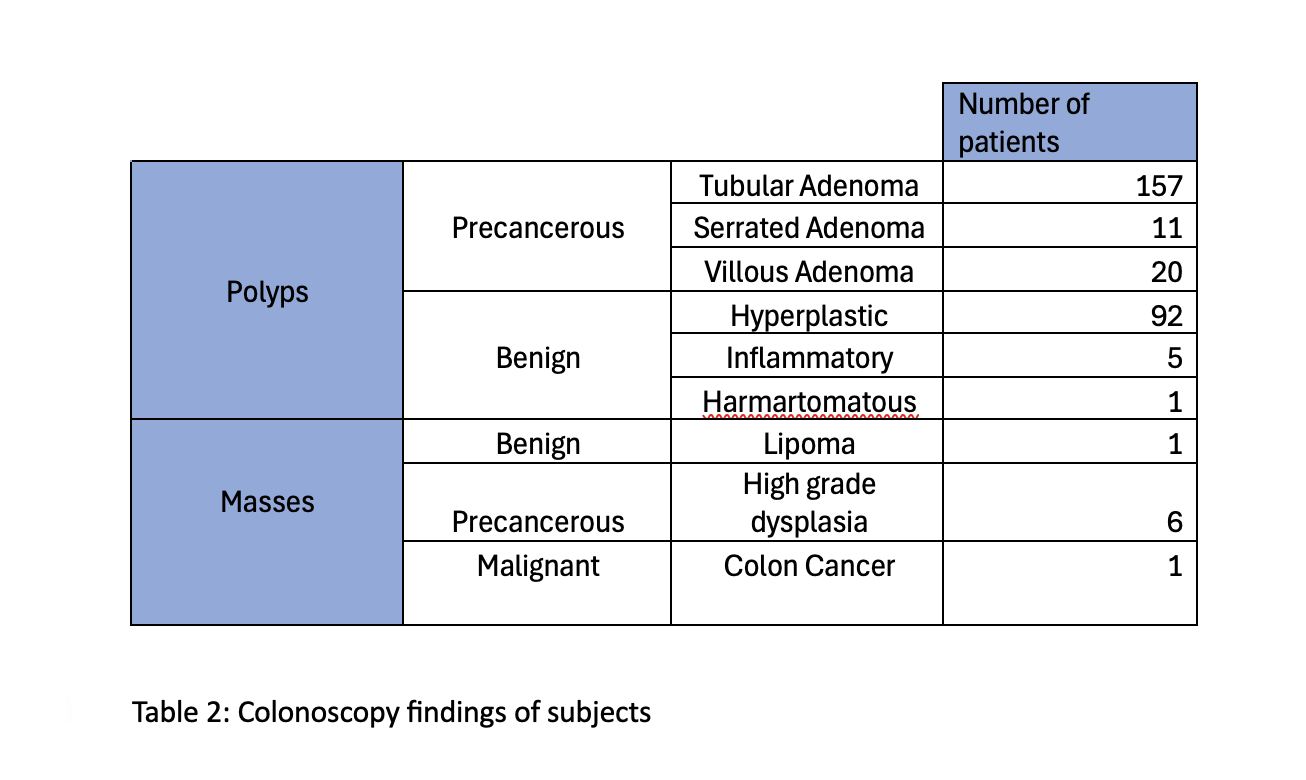Sunday Poster Session
Category: Colorectal Cancer Prevention
P0505 - Cologuard vs Colonoscopy: Screening Accuracy and Disparities in a Rural Cohort
Sunday, October 26, 2025
3:30 PM - 7:00 PM PDT
Location: Exhibit Hall

Junaid khan, MD
Tidal Health
Salisbury, MD
Presenting Author(s)
Junaid Khan, MD1, Umme Ferdaush, MD2, Qamar Iqbal, MD2, Daniel K. Daniels, MD, FACG3, Robert Joyner, PhD3
1Tidal Health, Salisbury, MD; 2TidalHealth Peninsula Regional, Salisbury, MD; 3TidalHealth, Salisbury, MD
Introduction: Colorectal cancer (CRC) ranks as the third most prevalent cancer worldwide and is the second leading cause of cancer-related deaths. In the United States, 153,000 people are diagnosed with colorectal cancer each year. Cologuard is one of the screening modalities currently being used to screen CRC. This study compares the results of self-administered Cologuard with those of colonoscopy in the same patient and also assesses racial disparities of CRC screening in a rural population of Delmarva Peninsula.
Methods: This was a non-interventional, retrospective study of patients who had a positive Cologuard test result, followed by a colonoscopy between 2021 and 2023. Demographics and other variables, including age, body mass index (BMI), race, alcohol use, smoking status, and colonoscopy findings, were collected. Data analysis was performed using chi-square tests to assess associations between these variables and colorectal cancer (CRC) outcomes.
Results: A total of 394 patients were included in the study, with 214 (54%) identifying as female and 178 (45%) as male. The majority of patients were White (87.1%, n=343), followed by Black individuals (11.9%, n=47). Colonoscopy findings revealed precancerous polyps in 188 patients, high-grade dysplasia in 6 patients, and colorectal cancer in 1 patient. Additionally, 99 patients were found to have benign polyps. The positive predictive value (PPV) of Cologuard for detecting high-grade dysplasia or malignancy was 53.3%. No statistically significant association was observed between CRC risk and smoking, alcohol use, or obesity (p = 0.270). Baseline characteristics are described in Table 1, and colonoscopy findings are described in Table 2.
Discussion: The study found a positive predictive value (PPV) of 53.3% for Cologuard in detecting high-grade dysplasia or malignancy. Our research also revealed that within our rural community, merely 12% of the Black patient population underwent CRC screening, even though they constituted 41.4% of the total community. This highlights a notable gap in the availability or utilization of screening services. Efforts to increase community awareness and engagement are crucial for improving screening rates. Further prospective studies are warranted for a better understanding of Cologuard as a CRC screening tool.

Figure: Table 1

Figure: Table 2
Disclosures:
Junaid Khan indicated no relevant financial relationships.
Umme Ferdaush indicated no relevant financial relationships.
Qamar Iqbal indicated no relevant financial relationships.
Daniel Daniels indicated no relevant financial relationships.
Robert Joyner indicated no relevant financial relationships.
Junaid Khan, MD1, Umme Ferdaush, MD2, Qamar Iqbal, MD2, Daniel K. Daniels, MD, FACG3, Robert Joyner, PhD3. P0505 - Cologuard vs Colonoscopy: Screening Accuracy and Disparities in a Rural Cohort, ACG 2025 Annual Scientific Meeting Abstracts. Phoenix, AZ: American College of Gastroenterology.
1Tidal Health, Salisbury, MD; 2TidalHealth Peninsula Regional, Salisbury, MD; 3TidalHealth, Salisbury, MD
Introduction: Colorectal cancer (CRC) ranks as the third most prevalent cancer worldwide and is the second leading cause of cancer-related deaths. In the United States, 153,000 people are diagnosed with colorectal cancer each year. Cologuard is one of the screening modalities currently being used to screen CRC. This study compares the results of self-administered Cologuard with those of colonoscopy in the same patient and also assesses racial disparities of CRC screening in a rural population of Delmarva Peninsula.
Methods: This was a non-interventional, retrospective study of patients who had a positive Cologuard test result, followed by a colonoscopy between 2021 and 2023. Demographics and other variables, including age, body mass index (BMI), race, alcohol use, smoking status, and colonoscopy findings, were collected. Data analysis was performed using chi-square tests to assess associations between these variables and colorectal cancer (CRC) outcomes.
Results: A total of 394 patients were included in the study, with 214 (54%) identifying as female and 178 (45%) as male. The majority of patients were White (87.1%, n=343), followed by Black individuals (11.9%, n=47). Colonoscopy findings revealed precancerous polyps in 188 patients, high-grade dysplasia in 6 patients, and colorectal cancer in 1 patient. Additionally, 99 patients were found to have benign polyps. The positive predictive value (PPV) of Cologuard for detecting high-grade dysplasia or malignancy was 53.3%. No statistically significant association was observed between CRC risk and smoking, alcohol use, or obesity (p = 0.270). Baseline characteristics are described in Table 1, and colonoscopy findings are described in Table 2.
Discussion: The study found a positive predictive value (PPV) of 53.3% for Cologuard in detecting high-grade dysplasia or malignancy. Our research also revealed that within our rural community, merely 12% of the Black patient population underwent CRC screening, even though they constituted 41.4% of the total community. This highlights a notable gap in the availability or utilization of screening services. Efforts to increase community awareness and engagement are crucial for improving screening rates. Further prospective studies are warranted for a better understanding of Cologuard as a CRC screening tool.

Figure: Table 1

Figure: Table 2
Disclosures:
Junaid Khan indicated no relevant financial relationships.
Umme Ferdaush indicated no relevant financial relationships.
Qamar Iqbal indicated no relevant financial relationships.
Daniel Daniels indicated no relevant financial relationships.
Robert Joyner indicated no relevant financial relationships.
Junaid Khan, MD1, Umme Ferdaush, MD2, Qamar Iqbal, MD2, Daniel K. Daniels, MD, FACG3, Robert Joyner, PhD3. P0505 - Cologuard vs Colonoscopy: Screening Accuracy and Disparities in a Rural Cohort, ACG 2025 Annual Scientific Meeting Abstracts. Phoenix, AZ: American College of Gastroenterology.
